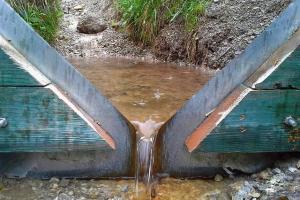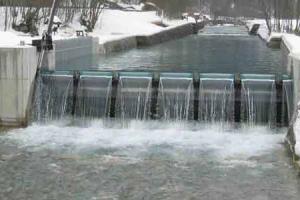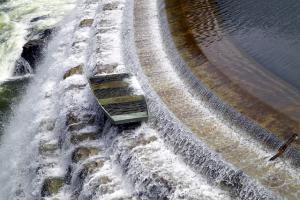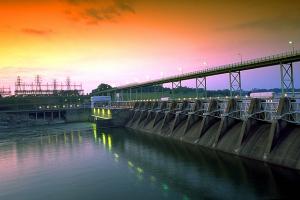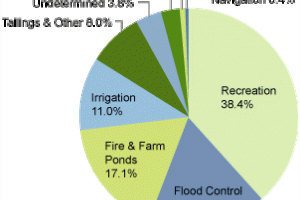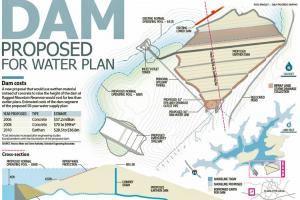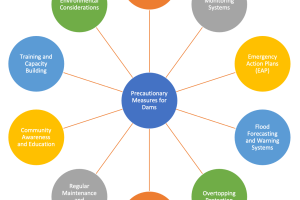Requirements Of Small Hydro Power Project

1.0 General Requirements Of Small hydro Power projects
1. Durability
All civil works must be durable and maintainable to 15 years, except in cases of specific components where rebuild is explicitly included and costed in the management plan.
2. Optimization
Civil works must be designed for adequate and safe performance at minimum expense.
3. Flow closure
Reliable methods of diverting flow from the silt basin, canal, forebay, and from the penstock, so that these components can be quickly emptied whenever required, must be included in the design, and must be tamper-proof. There must be at least two flow diversion devices if there is a canal included in the design.
4. Maintenance and materials
The use of high quality materials and construction techniques will result in less maintenance and repair work through the life of the scheme, whereas low-cost construction will require considerable maintenance. Both approaches are acceptable, though the first approach is recommended for most schemes of larger capacity. The hydropower plant management plan must make provision for high maintenance activity and cost in cases of low-cost civil works.
5
In all schemes concrete is recommended for the turbine base and for penstock anchor blocks; it can be used in medium-cost headworks, canals, and forebays to provide strength and erosion resistance in vulnerable areas such as the floor of the canal and forebay/silt basins, and the intake mouth.
When visiting verify the above and in addition:
6.
Check for leaks from all civil constructions. These can quickly give rise to expensive damage and must be fully repaired before the scheme is put to use. Also repair cracks or any faulty work which could give rise to problems at a later date.
7.
A reliable and rapid shut-down or emptying method must be demonstrated for the silt basin, canal, forebay, and penstock. Close all gates, then progressively open each one to check that overflows work safely.
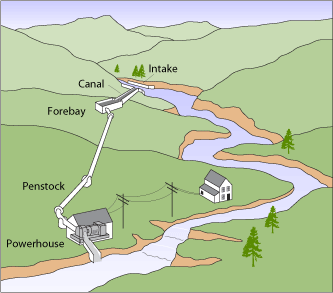
2.0 Weir and intake Requirements Of micro hydro Power systems
1. Natural weirs
Particular attention must be paid to the choice of site for the intake. The river bed must not be in danger of deepening (due to scouring action) or in danger of changing course, such that an intake built to function with a natural weir would cease to function.
2.
During low river flow conditions (such as the 5-year drought), the intake must continue to draw water in accordance with consumer expectations for power supply. In schemes where seasonal drying out of the intake is a possibility, the management of the scheme must be planned to allow for this, and contracts with consumers and tariff agreements must allow for periods of power shut-down.
3.
The intake must be of a passive design; that is, it must function in 5- year flood conditions without any need for operators to make adjustments or work close to flooded area.
4. If the weir and intake are a temporary structure, designed to be swept away high flow conditions, the seasonal replacement of this structure should be costed into the management plan, and provision made in consumer agreements for power shut down during the rebuild period.
5.
Intakes must be designed to operate reliably without clogging with sediment and debris. If a very low-cost design is adopted which is prone to clogging, provision must be made in the management plan to replace and upgrade as necessary. (An example is the use of a submerged pipe as an intake, which occasionally can work in some conditions, but will more often present problems and need to be replaced with a more reliable design).
When visiting verify the above and in addition:
6.
Check that the intake is not in danger of clogging. If it is, upgrade the design.
7.
If a natural weir used, check for signs of bed scouring and changes of course. If gabions are used to define the river course, check that a natural bank is developing around them to provide stability as the gabion mesh disintegrates over time.
3.0 Schemes without open canals
1. If the penstock starts at the intake, the headrace should follow spillway and forebay tank design principles with respect to deflection of flood waters and prevention of stones/debris entering penstock and air entrainment. Desilting may be necessary as detailed. The penstock entry section must be secure against flood water and boulders/trees etc carried by flood water. The requirement for a reliable method of penstock closure and emptying, which can be activated during flood conditions, is particularly important.
2. Air-traps
If a closed canal or headrace is used, such as a pipe, it is required that:
- Either the pipe is laid without high points or low points
- or if there are high points (or potential high points resulting from settling), then these must be protected from air traps either by vent pipes rising to above static head level or by air release valves
- If there are low points these should be fitted with flush valves to allow removal of debris blocking the water flow
- Water will start to flow through by itself when it is diverted toward the system, without any need for priming.



